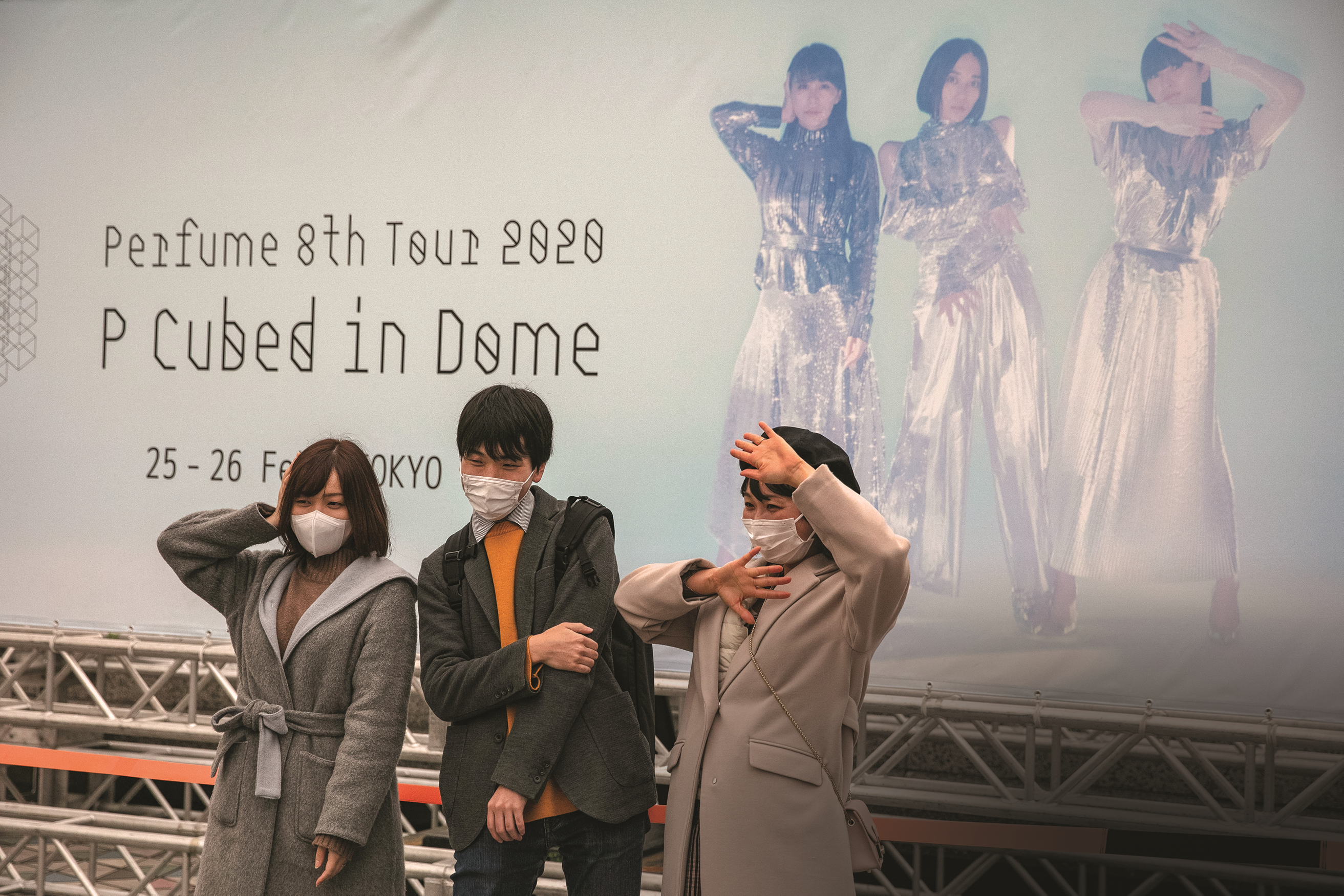Features
Japan Easing Indoor Restrictions

AP Photo / Jae C. Hong – Perfume in Japan
Fans get ready for Japanese girl group Perfume outside Tokyo Dome in Tokyo Feb. 25 as Prime Minister Shinzo Abe said new measures will determine if Japan could control its coronavirus outbreak.
Despite recent spikes in infections in the capital of Tokyo, Japan will relax its restrictions on holding big events. Starting July 10, indoor venues can allow up to 5,000 persons entry, provided that other preventive measures are in place during the event. Previously, the maximum number was 1,000 persons. However, the venues must also not exceed 50 percent normal capacity. In addition, professional baseball and soccer games, which have been taking place without spectators, may also now permit a limited number of spectators into stadiums.
As far as entertainment goes, the relaxed rules may do little to stem the financial anxiety many companies are experiencing thanks to the 50 percent capacity rule. According to the Yomiuri Shimbun newspaper, the Parco Theater in Tokyo has introduced a new ticketing method for its reopening. Tickets will be sold in three stages, and the number of tickets put on sale will be determined by the level of coronavirus infections at the time the tickets are to go on sale. During the first stage, for example, the maximum 50 percent capacity limit was observed — 318 tickets for the 636-seat theater.
As producer Misaki Mori told the newspaper, “If this situation with the vacant 50 percent continues, [the production] won’t pay off and we’ll end up giving performances while losing money.” The famed Takarazuka all-female musical revue troupe is also altering its presentation method to address restrictions. The troupe will reopen one of its theaters July 17 and another on July 31. Because of the 50 percent rule, they will only present one performance a day rather than two and will instead extend the runs of the specific plays by about two weeks in order to accommodate all fans. They will also present charged livestream performances.
Japanese orchestras have also restarted activities. The Tokyo Philharmonic resumed its schedule on June 21 with a concert at Orchard Hall in Tokyo. Only 1,000 seats of the hall’s 2,000 were available for purchase, but in the end only 400 people attended. The management told Yomiuri that even if they had sold all 1,000 seats, they wouldn’t have made any money.
Kyoichi Ishimaru, the CEO of the orchestra, told Yomiuri, “We still need to show that we can perform. Otherwise, we’ll have no offers for performances and that would result in us going under.”
The chairman of Japan’s Association of Classical Music Presenters commented that Japanese classical music fans tend to be very quiet during performances, and so he doubts if the normal social distancing rules need to be applied to classical concerts. Apparently, another classical music promotional group is now experimenting with wind players to assess how far droplets from the instrument travel from the stage into the audience. The purpose is to “get scientific grounds” that can help them persuade the authorities to ease the 50 percent limit.